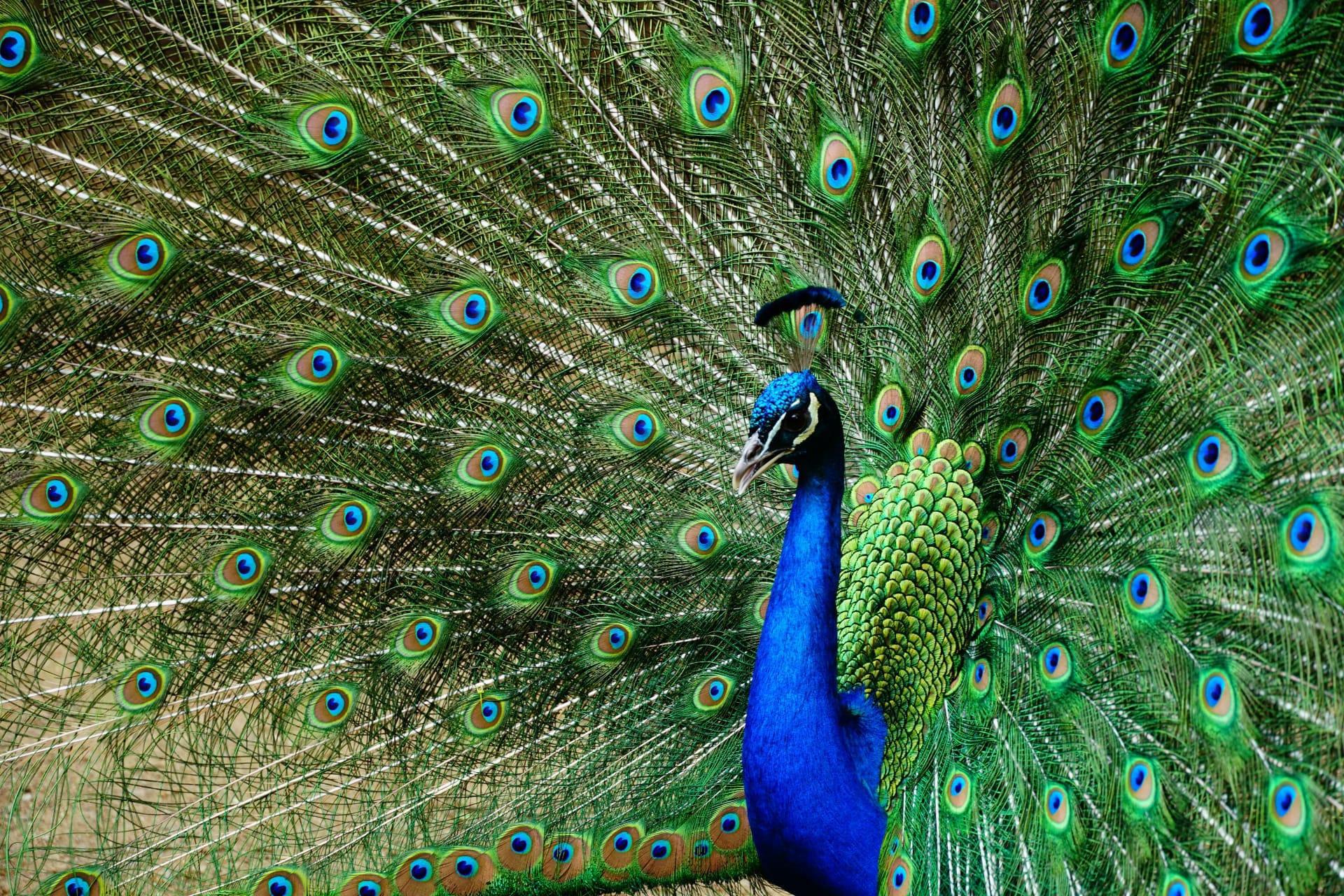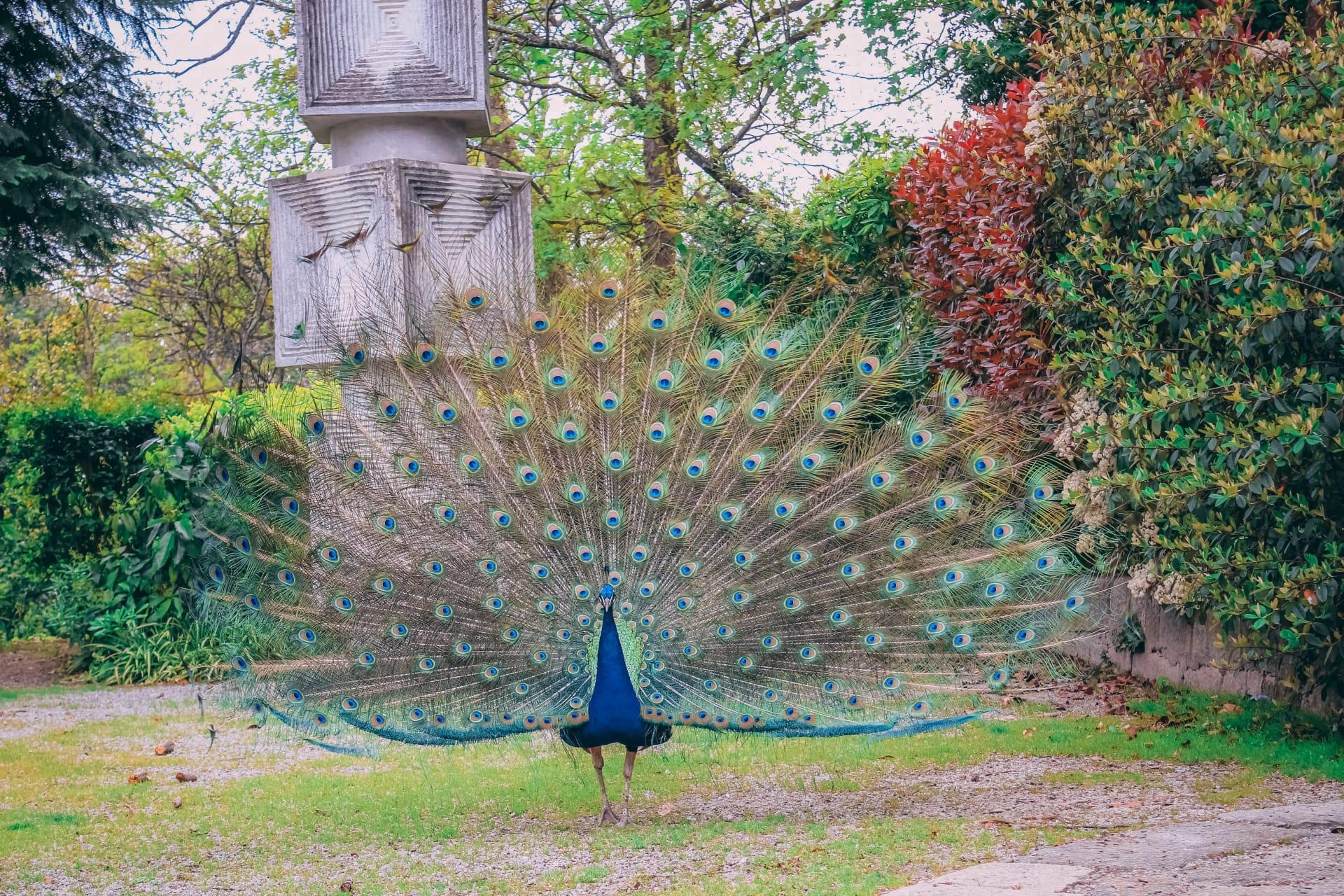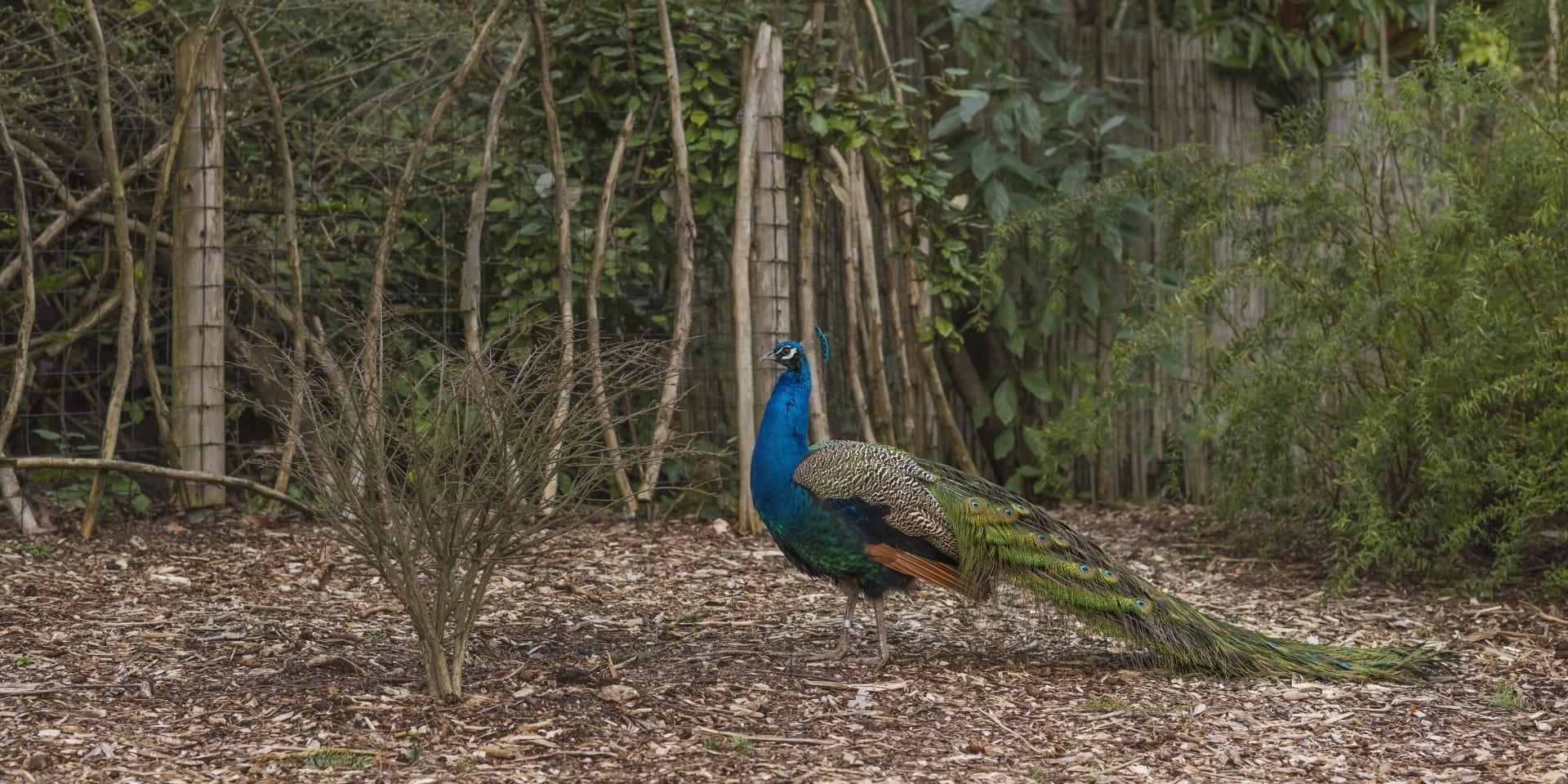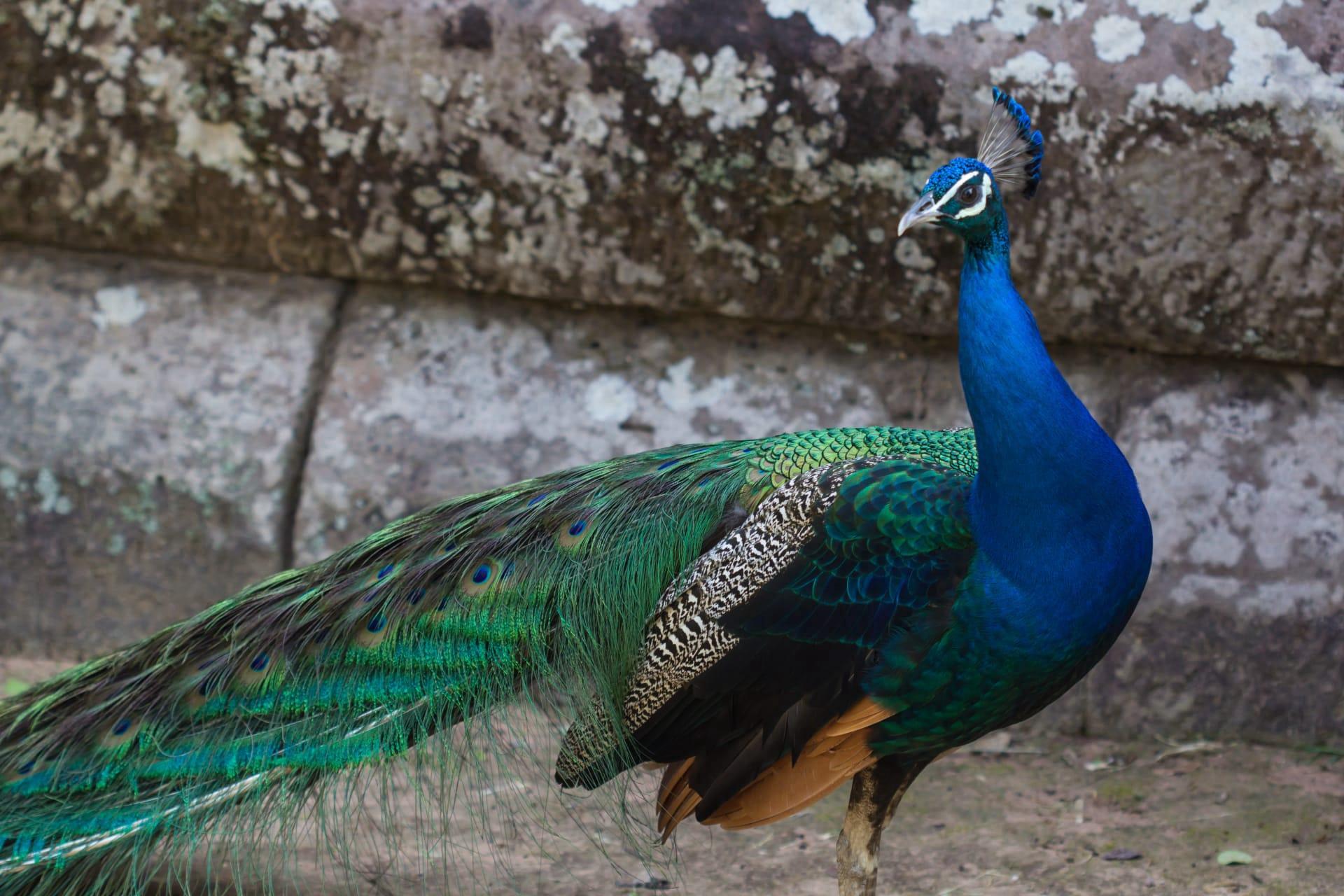1
Peacocks are renowned for their vibrant tail feathers, which can span up to 6 feet in width and comprise about 60% of their total body length. Not just for show, these feathers play a crucial role in courtship rituals, where males fan out their plumage to showcase a dazzling array of iridescent colors and eye-like patterns, designed to attract mates.
Interestingly, the vibrant colors of a peacock's feathers aren't due to pigmentation but are caused by microscopic structures that refract light, creating what's known as structural coloration. This means that the feathers themselves are actually pigmented brown, but the microscopic structure bends light to produce the vivid blues, greens, and yellows that we see.

2
Peacocks can make a variety of sounds, but one of their most notable is a loud, piercing call often described as 'may-awe' or 'meow'. This call, which can be heard up to a mile away, is typically used to communicate with other peacocks and can serve as a territorial warning to rivals or a mating call to attract peahens.
The diet of a peacock is surprisingly diverse. These birds are omnivores and eat a range of foods, from grains, insects, and small reptiles to flower petals. In the wild, this varied diet is essential for maintaining their health and the vibrant colors of their feathers. In captivity, peacocks often receive a diet of specially formulated bird feed to ensure they get all the necessary nutrients.

3
Peacocks are capable of flight, despite their large size and the seemingly cumbersome nature of their tail feathers. They have strong chest muscles that help them take short but powerful flights, mainly to escape predators or to roost in trees at night. This ability is crucial for their survival in the wild.
A lesser-known fact about peacocks is their lifespan. These birds can live up to 20 years in the wild, and sometimes even longer in captivity. This longevity is quite impressive, especially considering the size and complexity of their ornate plumage, which requires a significant amount of energy and resources to maintain.

4
Peacock feathers have been a symbol of royalty and luxury throughout history. In many cultures, these feathers are considered a sign of good luck and prosperity. They were so prized in some societies that laws were enacted to prevent common people from wearing them, reserving them exclusively for the nobility.
The peacock's ability to eat venomous snakes is a unique and somewhat unexpected trait. These birds have a natural resistance to snake venom, allowing them to prey on small venomous snakes as part of their diet. This ability not only showcases their versatility as omnivores but also serves as a natural form of pest control in areas where they live.

5
Peacocks have inspired various mythologies and folklores around the world. In Hindu mythology, the peacock is associated with the deity Saraswati, representing wisdom, compassion, and the arts. In Greek mythology, the peacock's tail was said to have the eyes of Argus, a giant with a hundred eyes, symbolizing the all-seeing nature of the heavens.
The courtship dance of the peacock is not just a visual spectacle but also a tactile one. Research has shown that the rattling of their tail feathers during the display produces infrasound - sounds below the range of human hearing. This infrasound is believed to be another way to attract peahens, adding an auditory component to their already visually stunning courtship ritual.